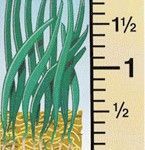Experienced Lawn Aeration Service
Unlock the full potential of your lawn with the premier lawn aeration services offered by G & G Landscaping Construction, Inc. in Columbus, NJ. Aeration is a critical component of maintaining a healthy, lush lawn by allowing air, water, and nutrients to penetrate the soil, promoting more robust root growth, and improving the overall health of your grass. Whether dealing with compacted soil or striving for a greener, more vibrant lawn, G & G Landscaping Construction, Inc. is here to provide the solutions you need for a thriving outdoor oasis. Contact us at 609-298-4175 and let our experts breathe new life into your outdoor space.
What is Aeration?
Aeration is the naturally occurring process of air exchange between the soil and its surrounding atmosphere. Practically speaking, aeration is the process of mechanically removing small plugs of thatch and soil from the lawn to improve natural soil aeration. It is commonly called “core aeration” in the lawn service industry, and you may have heard of it as soil cultivation (coring, spiking, and slicing).
What Are the Benefits of Aeration?
Core aeration can help make your lawn healthier and reduce its maintenance requirements through these means:
- IMPROVED AIR EXCHANGE BETWEEN THE SOIL AND ATMOSPHERE.
- ENHANCED SOIL WATER UPTAKE.
- IMPROVED FERTILIZER UPTAKE AND USE.
- REDUCE WATER RUNOFF AND PUDDLING.
- STRONGER TURF GRASS ROOTS.
- ENHANCED HEAT AND DROUGHT STRESS TOLERANCE.
- IMPROVING RESILIENCE AND CUSHIONING.
What Can You Expect From Aeration?
Immediately after aeration, your lawn will be dotted with small plugs pulled from the soil. They break apart within a week or two and disappear into the lawn. About 7 to 10 days after aeration, the aerification holes will be filled with actively growing white roots – a sign that the turf grass is receiving additional oxygen, moisture, and nutrients from the soil.
On compacted soils and lawns with slopes, you should see an immediate difference in water puddling and runoff after irrigation or rainfall. After aeration, your lawn should be able to go longer between waterings without showing signs of wilting. With repeated aerations over time, your lawn will show enhanced heat and drought stress tolerance.
Remember, most lawns benefit from annual aeration. And while you shouldn’t expect miracles, especially with poor soil, lawns that receive this care will be healthier, more vigorous, easier to maintain, and have fewer pest problems.
Thatch Buildup

Although a thin layer of thatch is beneficial, thatch accumulation should not exceed ½ inch. Excess thatch prevents air, light, and water from reaching root zones. Core aeration reduces thatch accumulation and minimizes its buildup.
Root Growth

Core aeration allows air, water, and fertilizer to reach the root zone better. This stimulates root growth to create healthier, more robust turf grass plants.
Soil Compaction

Turf grass in compacted soil grows slowly, lacks vigor, and becomes thin or does not grow. Core aeration removes small soil cores, depositing them on the turf's surface. This improves the depth and extent of turfgrass rooting. And it can help save money on your water bill.





